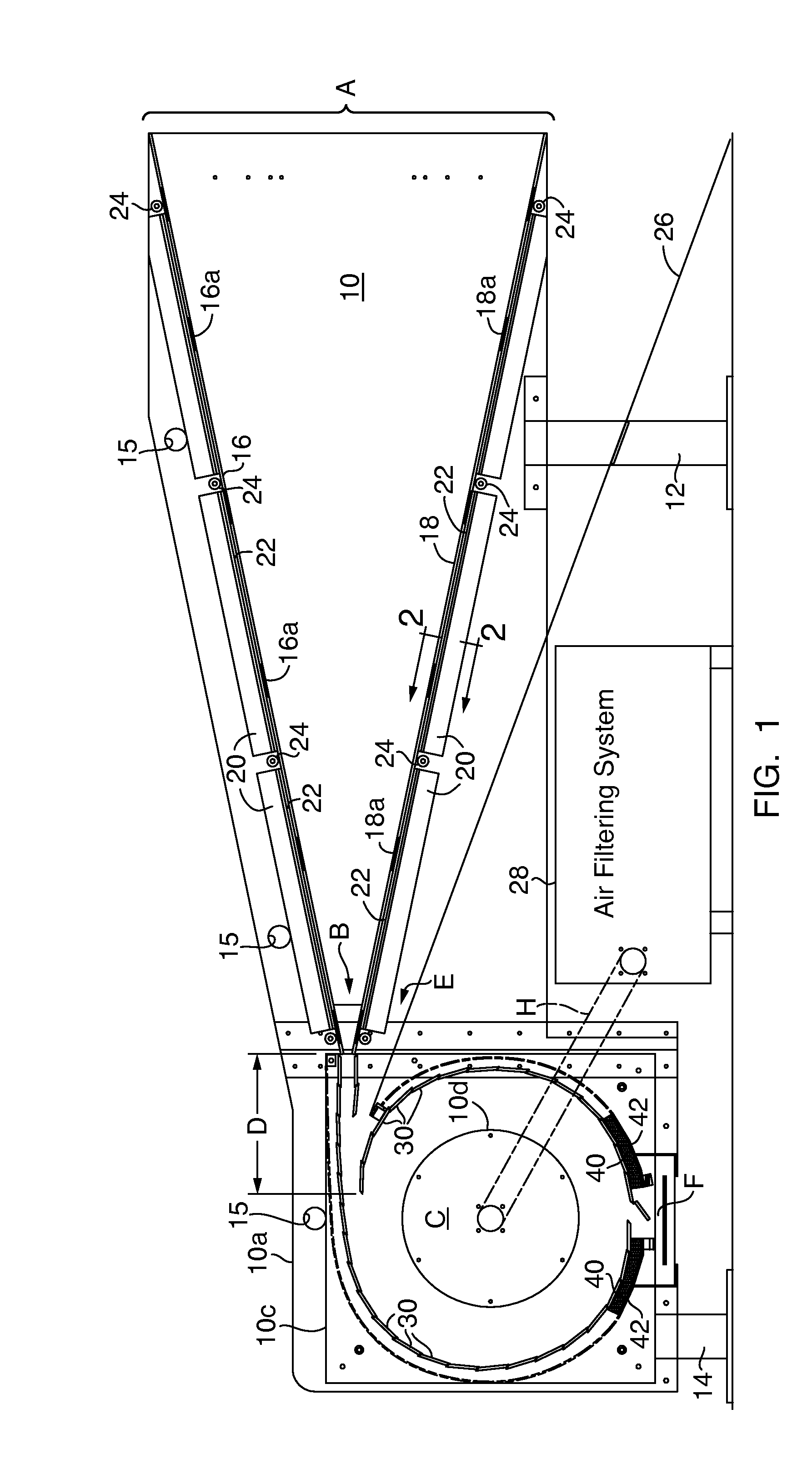Projectile containment system
a projectile containment and projectile technology, applied in the direction of bullet catchers, weapons, targets, etc., can solve the problems of air handling equipment otherwise being subject to damage, plate wear, and severe environmental concerns, so as to reduce the wear and tear of plates, efficiently absorb and achieve the effect of absorbing the impact of projectiles on these vanes more efficiently
- Summary
- Abstract
- Description
- Claims
- Application Information
AI Technical Summary
Benefits of technology
Problems solved by technology
Method used
Image
Examples
Embodiment Construction
[0016]In it's presently preferred form the bullet trap shown in the drawings will accommodate a single shooter located some distance upstream of the bullet trap. This distance will be dictated mostly by safety considerations, but will also be dictated by the type of firearm used, and by the immediate environment for the shooter's location relative to the bullet trap.
[0017]The bullet trap of FIG. 1 has an open front end A in which a target can be hung, and into which open end the projectiles are fired by the shooter. More particularly, the rectangularly shaped target opening A of the bullet trap has lateral sides, defined by spaced apart vertically extending steel plates 10,10, that are part of a frame which also includes other structural components, such as the legs 12 and 14. These side plates 10,10 are parallel so as not to interfere with projectiles fired into the bullet trap target opening from the shooter's station located upstream thereof. The edges of the target area A are pr...
PUM
 Login to View More
Login to View More Abstract
Description
Claims
Application Information
 Login to View More
Login to View More - R&D
- Intellectual Property
- Life Sciences
- Materials
- Tech Scout
- Unparalleled Data Quality
- Higher Quality Content
- 60% Fewer Hallucinations
Browse by: Latest US Patents, China's latest patents, Technical Efficacy Thesaurus, Application Domain, Technology Topic, Popular Technical Reports.
© 2025 PatSnap. All rights reserved.Legal|Privacy policy|Modern Slavery Act Transparency Statement|Sitemap|About US| Contact US: help@patsnap.com



